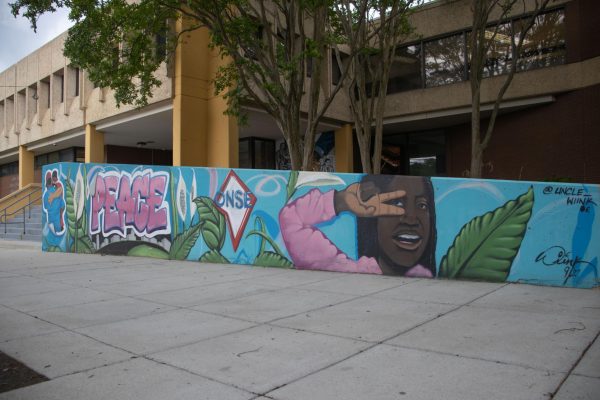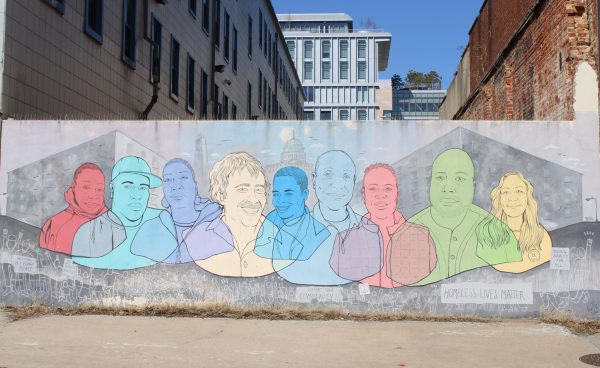The Forgotten River: Anacostia’s Dirty History
Originally published in Spring 2017, Issue 21.
Anacostia River, who?
The Anacostia River, often called the “forgotten river,” flows from Prince George’s County in Maryland to the Potomac River. Not a popular tourist destination, the river is even forgotten by popular travel website Tripadvisor, which doesn’t list the river on its list of 418 top attractions in D.C. In contrast, the Georgetown Waterfront ranks number 23 on the list of 418 activities.
The Anacostia River is highly polluted, mostly from Washington Navy Yard and Washington D.C. Water and Sewer Authority — which are both close to the river. A 2015 National Oceanic and Atmospheric Administration report found that about 20,000 tons of trash and sewage are dumped into the Anacostia river each year.
The Environmental Protection Agency (EPA) has declared the river to be “impaired by trash,” the second river in the country to be categorized this way, following the Mississippi River. Additionally, the Anacostia Watershed Society’s 2016 annual report card of river conditions granted the river with an “F” for unsafe and unhealthy conditions.
Tammy Morrison is an Anacostia local who has lived in the city for 30 years. She is an active community member who volunteers alongside the Anacostia Watershed Society to collect trash, debris and other litter from the riverbanks.
“You can not even swim or fish in the Anacostia river—it’s that polluted,” Morrison said. “It’s unfortunate that my community has to suffer from these terrible conditions.”
According to Clean Water Action, the Anacostia is one of the most polluted rivers stemming from the Chesapeake Bay. As D.C. has grown, the Anacostia watershed has become more polluted. Filled with trash, sewage, sediment and other pollutants, the Anacostia river is a far cry from its sister river, the Potomac.
Morrison, among other locals, is concerned that the Anacostia River is intentionally neglected due to the area’s socioeconomic condition. Anacostia’s median income is 41 percent less than the D.C. average. As it gentrifies, which it is expected to according to St. Elizabeth’s Development, whether the river remains as neglected is yet to be seen.
Jeff Stanley, a 45-year-old teacher and Anacostia resident, has lived with his wife and two children for 20 years in Anacostia. He says local attention is not enough to save the forgotten river.
“You can see how this can be considered a social issue. … People in Georgetown don’t have to worry about clean water in the Potomac,” Stanley said. “Tourists go there and sit on the Tidal Basin and have a good time. Anacostia definitely isn’t a tourist hotspot; people don’t even know about it unless you live here. And it’s sad because this is my home and the pollution is still not given enough attention.”
Environmental advocacy organizations argued that cleaning up the river will have economic benefits that will outweigh the financial costs. Jobs will flow into the surrounding communities as they become cleaner and healthier to live in.
“It appears that the District doesn’t care much about the conditions of the river. None of the tourists visit the southeast region of D.C., so why bother cleaning it all up?” Morrison said.
Cleaning up the river
Efforts to clean up the river over the past 10 years have reduced the sheer amount of trash. For example, as part of the D.C. Sustainability Act, the city has banned styrofoam containers to reduce everyday citizen pollution. Other business regulations include refurbishing outdated business infrastructure surrounding the river in order to reduce sewage overflow and runoff into the Anacostia.
“Cleaning up the Anacostia is going to take a lot more effort and collaboration than expected,” Stanley said. “Federal, state and local officials will probably have to join together to clean the water and make it even bearable to be around. The river is probably a lot better than it once was, but there’s still have a long way to go.”
The EPA’s Clean Water Act of 1972 made it unlawful to directly pollute any navigable river nationally and promoted the implementation of low-impact development on the banks of the Anacostia river. These environmentally-friendly infrastructure suggestions will limit the amount of stormwater runoff in the river. This runoff carries away oil, trash and dangerous chemicals into the Anacostia River’s slow-moving tide.
Some residents, like William Rosenfeld — who has lived in Anacostia for 10 years — feel these federal laws are not enough.
“It’s frightening to think that factories around the river have been shut down completely to combat the toxic pollutants, and yet, here we are in 2017 still with mercury-filled water in our river,” Rosenfeld said. “Although some laws and regulations have improved the water quality somewhat, so much more should be done.”
Alejandro Dávila is the press secretary of Earthjustice, a nonprofit environmental law advocacy group. He says stormwater runoff constitutes the majority of the Anacostia river pollution. Along with this runoff, debris and toxic pollutants gather in the Anacostia, including pesticides, lead, and mercury.
A March 2016 report by the District Department of Energy and Environment found these toxic chemicals in a study of the river. Dávila said the report confirmed the existence of polynuclear aromatic hydrocarbons, or PAHs and PCBs, carcinogenic chemicals that have been banned for decades. They are also linked with cardiovascular disease, and they are one of the many contaminants in cigarette smoke and particulate air pollution. PAHs
spur the onset of chemical carcinogenesis, where normal cells are transformed into cancer cells.
Not only does the pollution negatively impact people’s health, it also impacts wildlife and ecological stability.
“One of the main sources of pollution that impact wildlife in the Anacostia and other rivers is actually personal care products,” said Chelsea Greene, editor for the National Institute for Standards and Technology. “For instance, a certain type of hand sanitizer and birth control pills can get into wastewater treatment plants and can kill fish or cause them to develop abnormalities such as becoming unisex.”
Greene says she is concerned for the factory infrastructure surrounding both the Anacostia and Potomac rivers. She says that the D.C. sewage system infrastructure is not adequate for massive rain storms and desperately needs to be updated soon.
Frustration with D.C. governance
Anacostia locals have expressed their anger and resentment towards D.C.’s government. They have filed five different petitions over the past seven years for river cleanup. Community members are now taking matters into their own hands.
Groundwork Anacostia is one organization trying to clean up the river. It works on community-sponsored initiatives to connect people with their environment while simultaneously improving it. Community members living near the Anacostia River and its tributaries work together to improve parks, green spaces and other community environmental concerns.
Cache Lance is a volunteer with the Green Team, which operates through Groundwork Anacostia. This program establishes and promotes a partnership with students at four local high schools to participate in river cleanup.
“The program is especially beneficial for these students because they get to learn about how important the environment — especially their own community’s — is,” Lance said. “We focus on teaching them about the importance of composting and cleaning up the environment to make the Anacostia River a safer and healthier place.”
Community-based work allows people to become connected with their environment and learn to appreciate the importance of making their community a healthier and cleaner place to live.
A lot of the work done to improve the river conditions has been community-based because of the inaction from the D.C. government.
The D.C. Department of Health did not respond to requests for comment on this story.
Federal City Council’s Anacostia River Initiative has similar goals to Groundwork Anacostia. This organization, along with six other nonprofits as part of United for a Healthy Anacostia, focuses on water quality improvement and improving the conditions of the river and its surrounding communities to attract potential residents and visitors.
Anacostia Waterfront Trust Executive Director Doug Siglin said their efforts are revolutionary, as they want to focus on both strengthening their community and improving water quality.
“The revitalization of the river would benefit everyone in this region both economically and socially,” Siglin said. “A comprehensive cleanup will make these communities flourish, especially by spurring job growth. We are laying the groundwork to help bring businesses and investment to the entire watershed by making it a more attractive and healthy place to live.”
These community efforts to improve the Anacostia river have been effective in the short term. The river’s conditions have improved within the last ten years with much less trash and debris in the body of water. It’s time for the forgotten river to get the recognition it needs in order to better the lives of the poor and working-class communities around them.
“One day, people will be able to swim and fish in the Anacostia. I hope that organizations like mine play a huge role in that process,” Siglin said.
Taylor Sabol is a first-year studying public health.

I'm a Senior majoring in Public Health. My areas of interest include health equity, housing access, and criminal justice reform. I have always been a writer...






